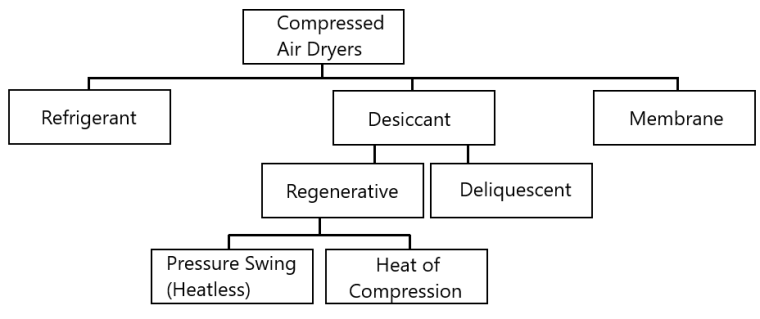After nitrogen and oxygen, water vapor is the third most abundant (by percentage) component of air. Because of the numerous problems that moisture causes in compressed air systems, it’s critical to have measures in place to remove it. That’s why any industrial air compressor will be equipped with a dryer.

Membrane dryers are among the newest technologies used in compressed air treatment. They work by osmosis…that’s the principle by which a selectively permeable membrane will allow some stuff (but not all stuff) to pass through. In biology, it’s how:
- The cells in a plant’s roots draw moisture from soil.
- Your blood picks up oxygen from your lungs & nutrients from your digestive system and delivers it to your organs.
- Placing the textbook under your pillow tonight transfers information you’ll need for the big exam tomorrow into your brain.
OK; that last one isn’t true, and you’d know that if you’d read the textbook. In addition to the natural world, the principle is also exploited in industry for commercial gain:
- Desalination and purification of water.
- Nitrogen generation.
- Removing water and water vapor from compressed air.
For the purposes of today’s blog, that last one is the one we’re interested in. The construction of a membrane dryer consists of a cylinder filled with tiny polymer tubes with a special coating on their inner walls…this is the membrane itself, which lets the water pass through, via the abovementioned principle of selective permeation.

Membrane dryers have no moving parts, and use no electricity…their only utility load is the compressed air consumption of the sweep (also called “purge”) air flow. This is noteworthy, as it can be as high as 15-20% of the compressed air flow, if maximum dew point suppression is desired.
Due to their simple & compact design, they’re among the easiest dryers to install, and they’re unaffected by environmental contamination & ambient temperature. They are, however, quite sensitive to internal contamination. Membrane dryer systems typically incorporate a proprietary filtration system to remove oil/oil vapor and fine particulates from the compressed air flow.
The biggest limitation of a membrane dryer is their flow capacity – they’re going to max out at about 200 SCFM, so they’re best suited to small-to-mid size systems. If a particular area of the facility requires a lower dew point than the rest of the plant, a membrane dryer is definitely worth a look. That’s an ideal fit for its “pros”:
- Low capital, and operating costs.
- Ease of installation, even in a compact space
- Maintenance free
And the “cons” are minimalized:
- Purge air flow has to be a higher percentage of total flow for lower dew point, but it’s a percentage of a specific area’s air flow, not the whole system.
- Lower total air flow means smaller/less expensive filtration.
EXAIR Corporation wants to help you get the most out of your compressed air system. If you’d like to find out more, give me a call.
Russ Bowman, CCASS

Application Engineer
EXAIR Corporation
Visit us on the Web
Follow me on Twitter
Like us on Facebook
Membrane Dryer Schematic – From Compressed Air Challenge, Best Practices for Compressed Air Systems, Second Edition
Air Compressor System photo courtesy of thomasjackson1345 Creative Commons Attribution-NoDerivs 2.0 Generic (CC BY-ND 2.0)